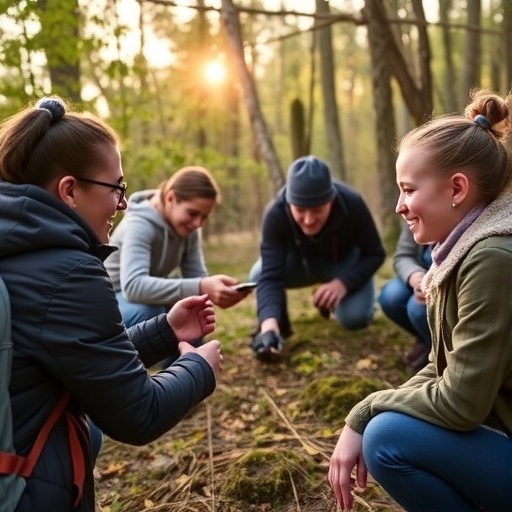How Urban Design Shapes Our Daily Steps: A Nationwide Study Unveils the Power of Walkability
In an unprecedented natural experiment spanning thousands of cities across the United States, researchers have uncovered compelling evidence that the built environment—particularly city walkability—exerts a measurable influence on people’s physical activity. By harnessing data from personal smartphones, this study chronicles the real-world behavioral shifts in daily step counts among individuals relocating to urban areas with varying levels of walkability. The findings bolster the growing recognition that urban design is not merely an aesthetic or logistical concern but a profound determinant of public health.
Over more than 7,400 relocations tracked across 1,609 cities within a three-year window, the research team meticulously analyzed the alterations in physical activity linked with changes in the walkability of new environments. Walkability, a composite metric quantifying factors like pedestrian infrastructure, proximity to amenities, and street connectivity, was evaluated at the city level. Participants’ smartphones, acting as continuous, passive activity monitors, registered steps in real time, allowing for an objective and comprehensive capture of movement patterns. This large-scale behavioral tracking extends prior ecological research by harnessing natural experiments, where individuals’ relocation forms an organic basis for causal inferences about environment-behavior relationships.
While acknowledging certain limitations—such as the inherent biases possible in a smartphone-reliant sample skewed toward higher socioeconomic status or health-conscious individuals—the study provided robust evidence against the notion that relocation choices were driven solely by pre-existing activity preferences. Importantly, increased walkability correlated with increased physical activity even after adjusting for city median income and climate variations, implying that infrastructural factors play a decisive role independently of socioeconomic and environmental confounders.
Walkability indices are intricate composites, encompassing factors such as land use diversity, intersection density, and access to public transit. However, the widely used and validated aggregate scoring method employed by the researchers, while powerful at the city level, cannot isolate which specific urban design elements drive the observed physical activity changes. The absence of granular neighborhood-scale data limits this dissection, underscoring the need for future research to parse how particular street layouts, transit options, or green spaces individually impact activity behaviors.
A critical strength of the study lies in the longitudinal, pre- and post-move comparison design. Rather than a simple cross-sectional snapshot, this approach capitalizes on within-person changes in environment and activity, minimizing confounding by individual fixed characteristics. Such quasi-experimental methodology, paired with passive sensing technology, reveals the capacity of walkable environments to foster tangible increases in walking—a primary form of aerobic exercise with broad health benefits.
Despite smartphones capturing a vast range of movement, the authors note that certain physical activities, including those where carrying a device is impractical or the motion is not step-centric, may be underrepresented. Activities like bicycling or team sports could thus be less detectable, suggesting that the reported impacts primarily reflect walking-related behavior. Furthermore, systematic differences in device wear time did not correlate with changes in walkability exposure, enhancing confidence that observed associations reflect genuine behavioral shifts instead of measurement artifacts.
The broader implications of the research are significant. Urban planners and public health policymakers aiming to combat sedentary lifestyles now possess quantifiable evidence that modifications to the built environment not only affect how cities function but actively shape the daily behaviors of millions. Targeted improvements in infrastructure to enhance walkability—through better intersection designs, improved land use mix, and transit access—stand out as scalable, population-wide interventions capable of boosting physical activity without relying on individual behavior change alone.
However, the study also highlights a nuanced landscape where different demographic groups may respond differently to changes in walkability. For example, women over 50 represent a subgroup that could especially benefit from infrastructure enhancements paired with tailored interventions. This insight invites more personalized, equity-driven strategies complementing broad urban design reforms, ensuring the built environment supports diverse populations effectively.
Technological advances played a pivotal role in enabling this research. The ubiquity of smartphones—with over 90% penetration among US adults—combined with the rise in wearable devices like smartwatches, opens unprecedented avenues for real-time, large-scale behavioral monitoring. The seamless integration of these data streams into public health research provides a methodological leap beyond traditional self-report surveys, allowing for more precise, objective, and temporally rich analyses of how environments influence movement.
While transferring these findings globally requires caution—given the study’s focus on the United States—parallel research in diverse countries suggests that fundamental relationships between urban form and physical activity may be broadly consistent across settings. This cross-cultural validation encourages the application of walkability principles worldwide, adapted to local contexts, climate conditions, and cultural norms.
As urban populations continue to swell, the challenge of designing health-promoting cities grows ever more urgent. This study’s scale and sophistication exemplify how “big data” and natural experiments can illuminate pathways toward more active, sustainable urban living. By integrating behavioral science, urban planning, and digital health technologies, the research community edges closer to empirically grounded blueprints for cities that move people—literally—toward better health outcomes.
In sum, the findings decisively support the premise that built environment features, when deliberately crafted for walkability, hold transformative potential to elevate population-level physical activity. Augmenting individual health behavior efforts, such environments create fertile ground for active lifestyles to thrive organically. The future of urban health likely hinges on such integrative, multi-dimensional solutions, leveraging the tried-and-true power of stepping outside.
Subject of Research: The impact of urban built environment—specifically city walkability—on individual physical activity levels, examined through longitudinal analysis of relocations across US cities.
Article Title: Countrywide natural experiment links built environment to physical activity.
Article References:
Althoff, T., Ivanovic, B., King, A.C. et al. Countrywide natural experiment links built environment to physical activity. Nature (2025). https://doi.org/10.1038/s41586-025-09321-3
Image Credits: AI Generated




